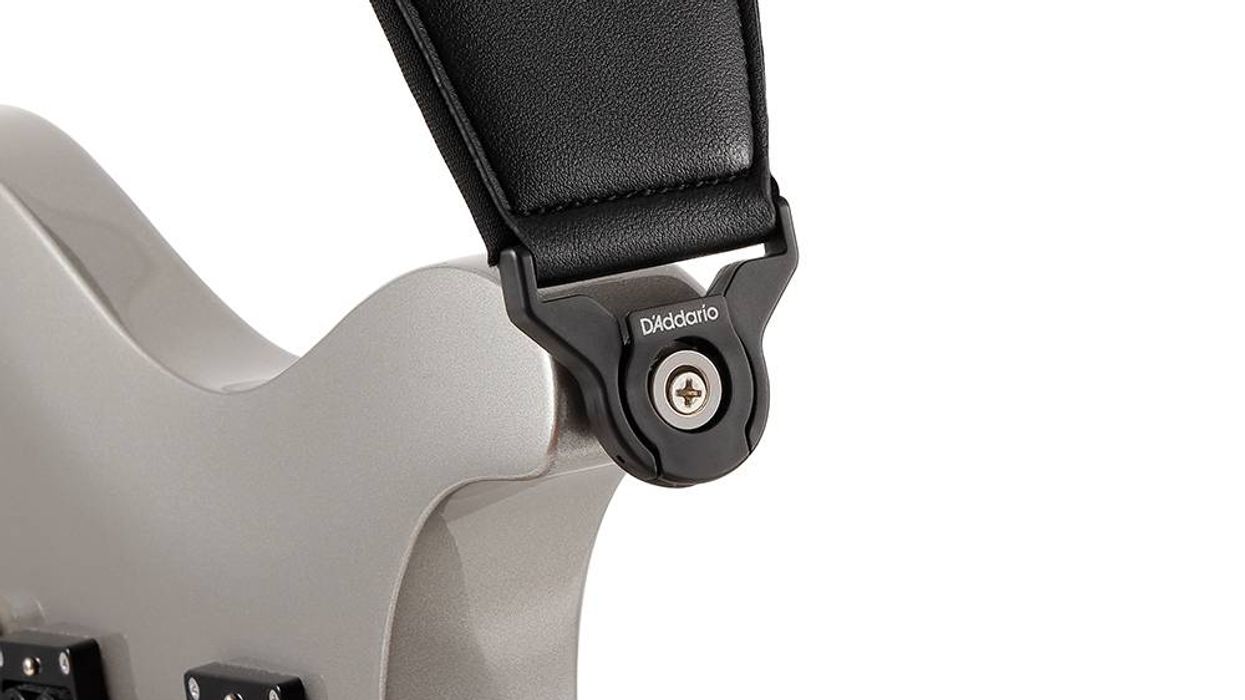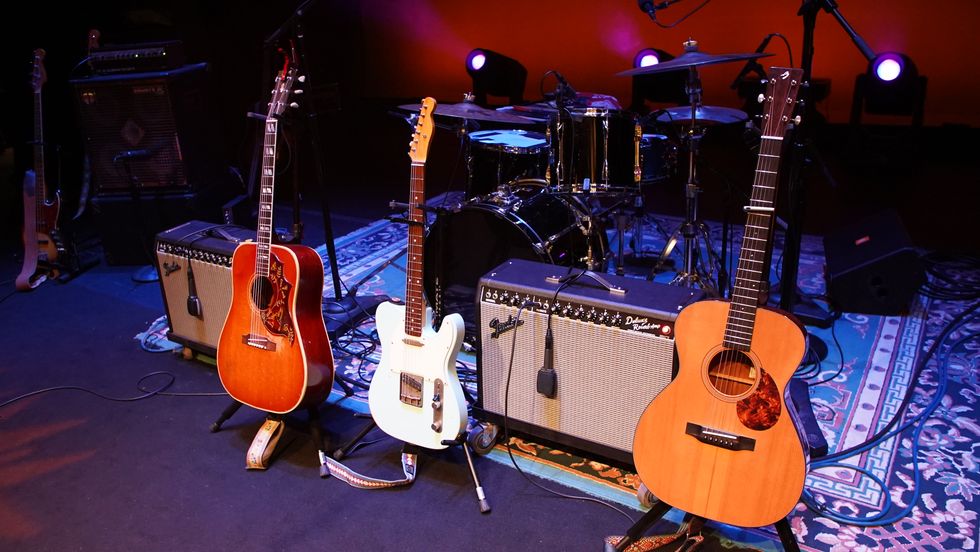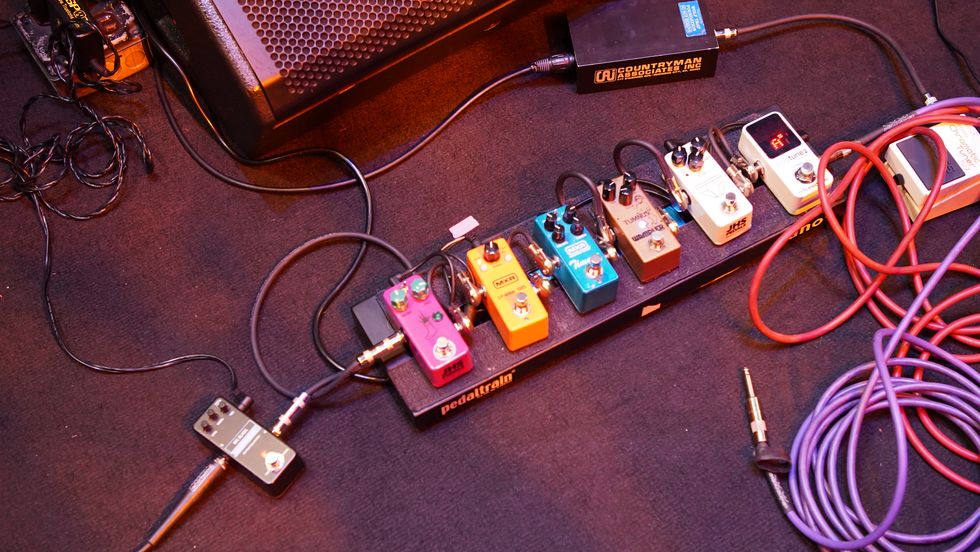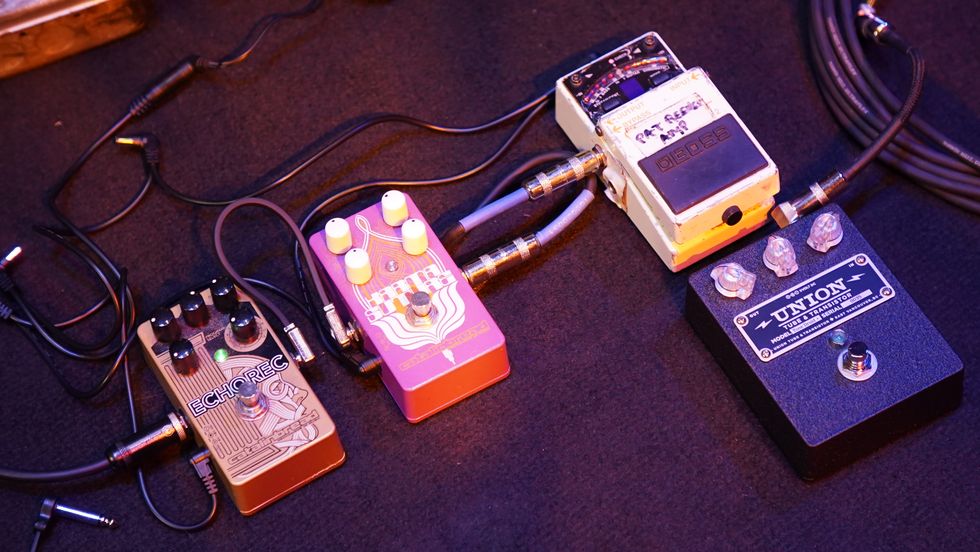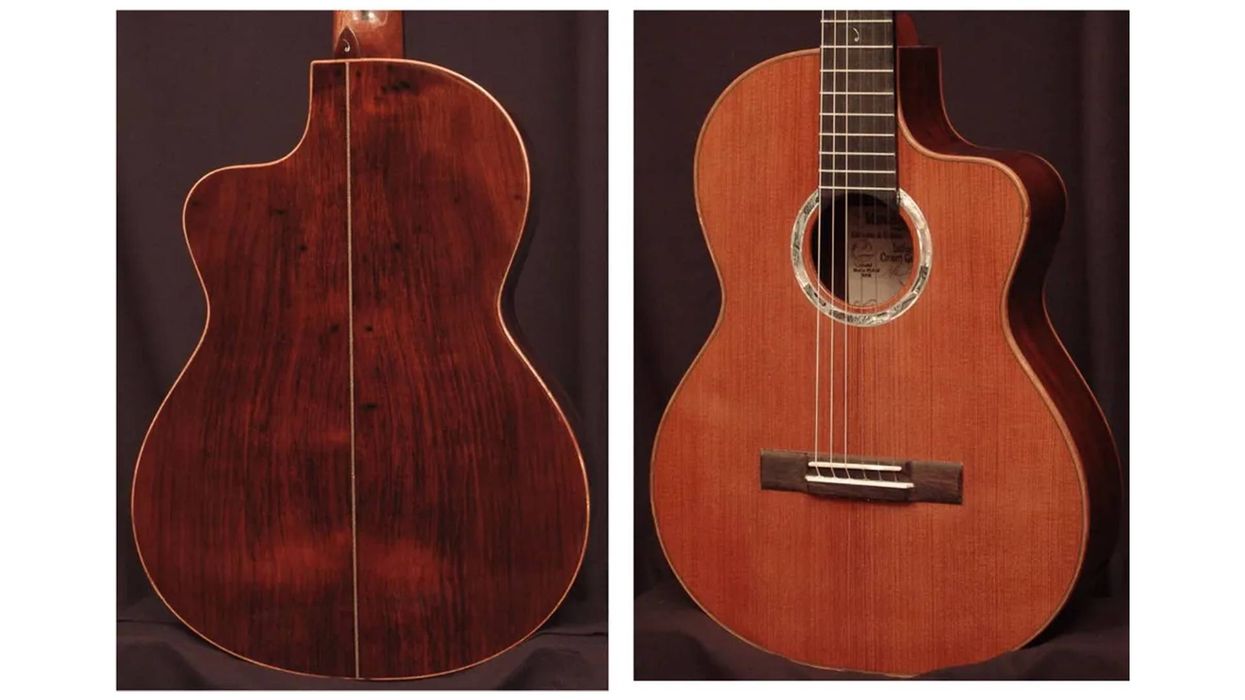If the electric guitar takes the prize for
most influential participant in the development
of modern music, then the humble
single-coil pickup should win an award for
its supporting role. It is not hyperbole to
say that single-coil pickups helped launch
rock ‘n’ roll—from Buddy Holly to Eric
Clapton to Jeff Beck, these versatile pickups
provided the foundation for countless
influential riffs and defined the “electric
sound” for an entire generation.
What is perhaps so remarkable about passive
single-coil pickups is that, for all intents and
purposes, they remain a straightforward idea,
built upon basic scientific concepts of magnetism
and electricity. This has made single-coil
pickups one of the most democratic of all guitar
components to build—find yourself a little
wire, a few magnets, and you’re in business (it
may not sound like an original Fender pickup,
but you’re in business nonetheless). Their very
simplicity lends itself to experimentation and
exploration, and it’s for this same reason that
many modern pickup builders got their start,
by repairing dead single coils.
That’s not to say that these pickups have
remained static in their half century of existence.
On the contrary, they’ve kept pace with
players as they’ve demanded more power
and less noise. They are as relevant today as
they were when Jimi Hendrix strapped on his
Strat at Monterey. A new generation of pickup
builders has delivered an incredible level of
specialization and complexity to demanding
gearheads, providing us with spot-on vintage
recreations, high-output powerhouses and
everything imaginable in-between.
This month, we’ll speak with five pickup
builders who have been working hard
to keep the single-coil pickup moving
forward: Pete Biltoft and Vintage Vibe
Guitars, J.D. Prince of Van Zandt Pickups,
Owen Duffy of O.C. Duff Pickups, Chris
Kinman of Kinman Guitar Electrix, and
Jerry Amalfitano of Amalfitano Pickups.
These builders demonstrate that there’s something
for everyone in today’s boutique pickup
market, and that single-coil devotees are limited
only by their imagination.
Pete Biltoft
Vintage Vibe Guitars
|
I started building guitars and pickups back in 1998. I have always been interested in fabrication technology and after looking closely at the pickups in my guitars I saw that there was room for innovation. This opportunity for me was almost irresistible, as I very much enjoy the challenge of design and fabrication. When I was a younger, I made my own surfboards, windsurf boards, windsurfing sails and other things. I even made a composite tennis racket once! I just love making things.
What’s your philosophy regarding pickup building?
We tailor the pickup design and carefully select the materials of construction to work in harmony to achieve a specific tone goal… we also incorporate features in the pickups, such as grounded shielding, to keep the noise from external sources to a minimum, because we believe a player deserves both great tone and low noise.
Do you scatterwind your pickups? What does that do for the tone of the pickup?
Yes, all of the pickup coils I make are scatterwound.
After hand-winding coils for quite a while, I developed a cam-driven mechanical system that guides the coil wire back and forth in a random manner that accurately reproduces hand winding. Using this system I can make scatterwound coils that are very uniform in their degree of “imperfection.” The result of scatterwinding is a more musical-sounding pickup.
You offer a wide range of options for players looking to fill a single-coil spot on their instrument—could you walk us through a few of the options and the materials you’re using?
We offer a very wide range of pickups for most popular instruments. For Strat- and Telestyle guitars, we have single-coil pickups with Alnico rod magnets, blade-style single coils, and P-90-style single-coils with adjustable poles. We also make stacked humbucking pickups and dual-blade humbucking pickups for both the Strat and Tele. In the P-90 format (soapbar and dogear) we offer single-coil pickup designs with adjustable-height polepieces, designs with Alnico rod magnets, blade-style and stacked humbucking pickups. We use several grades of Alnico magnets (II, III and V) and ceramic magnets in our products. Wire gauges range from the large diameter AWG-38 to very fine AWG-46. We stock coil wire with a variety of insulation types, including enamel, Formvar and polysol.
Your SP-90 seems like a fairly revolutionary design—can you tell us more about that?
Yes, I have had a few “revelations” over the years. I started out making single-coil pickups for Stratocasters and Telecasters; these tend to be reasonably simple from a design and fabrication standpoint. P-90-style pickups were a turning point for me. Prior to working on a P-90 design, I had not fully appreciated the tone a P-90-style single-coil pickup can generate. Over the years, my version of the P-90 design changed to include grounded shielding to reduce noise from external AC electric fields, and now the capability to change magnets. Following this, I developed a version of the P-90 design that fits into a standard plastic cover designed for a strat-size single-coil pickup. I call this pickup design the SP-90; it has been one of my best-selling standard models.
What makes your pickups unique, compared to some of the other boutique pickup options available?
Our products are unique from the ground up. We do not sell any pickups that are made using injection-molded plastic bobbins. One hundred percent of the pickups we make are designed and fabricated in our shop. Over the years we have developed and refined a family of pickups that are designed to allow the owner to change the magnets. In these pickups the magnets are held in place using threaded fasteners, rather than being glued into the assembly. This unique capability to change magnets provides the customer with the capability to tune the tone and output of a pickup to suit a specific instrument or musical style by changing the magnet type. When the capability of changing magnets is coupled with a shielded output cable, which has independent leads for the coil start and coil finish, the pickups can be made to be reverse wound, reverse polarity (RWRP) with respect to any other pickup. In effect, the user can change both the magnetic field direction and effective winding direction.
What kinds of feedback are you receiving from customers?
It generally falls into two categories. Quite often a customer will send me an email immediately after receiving a set of my pickups and let me know how well built the pickups look. People have told me that the construction and design features set my pickups apart from others. Let me give you an example: in a conventional Strat-style single-coil pickup the fine magnet wire exits the coil in two locations (coil start and coil finish). Each of these delicate wires go to a brass grommet, where the output leads are soldered. This exposed length of fine coil wire on top of the bobbin bottom flange can be damaged by handling and make the pickup non-functional. In the single-coil pickups we make for Strats and Teles, we add a wire shield over the area between the coil and the grommets that protects these delicate wires. This wire shield not only protects them, but also makes the pickup look like a thoughtfully designed product.
The second type of feedback I receive from customers has to do with tone. It has been very gratifying for me to hear that my pickups have transformed guitars that collected dust into favorite instruments. I also hear quite often that people play more because of the great tone they’re getting from their pickups. That’s the kind of feedback that really makes my day!
J.D. Prince
Van Zandt Pickups
|
I’ve been building since my uncle died in 1997, which was about 12 years ago. Were you interested in building pickups, or did you get into it more by necessity? I ran an auto repair shop for years, and I was kind of interested, but he wanted to slow down a bit and do some traveling, and spend more time doing things with my Aunt, so he brought me in and started training me on the process. That’s how I got into it—it’s something you’d never think about unless you did it.
How did Van Zandt Pickups originally come about?
Van Zandt pickups started with W.L. Van Zandt doing rewindings for friends and players around Dallas, and he did it in a little corner of his garage. And everybody liked the tone so much better than their original sound that he decided he ought to begin building his own pickups. And he started handwinding—all of our pickups are handwound—and then he built steel guitar pickups for builders for a long time. And then he decided to start building his own, and it just took off from there. We’ve been doing it for about 21 years now.
Was it tough transitioning the business after his passing?
Oh, a little bit. A lot of people tried buying up the stock that we had, because they thought that what we’d start building would be different. But it wasn’t at all—I was building some of that, so the stock they were buying up was actually from me. There’s no difference; we build them to the same specs that he built them to.
Tell us about Van Zandt’s approach to pickup building.
We want to give guitar players and builders the very best sound and product they can get, including vintage sounds they wish to replicate or custom sounds of their own. If somebody’s looking for something specific—and nearly everybody is looking for something—we try to build it for them and get them to where they want to be. We do that by mixing various pickups in a single guitar. Quality is our big thing, and for a small shop, I think we’ve done a good job with that. I guarantee it, stand behind it, and hope people will buy it and pass it along to others who might be searching for one of the best sounding pickups on the market today.
Can you take us through the differences between your single-coil sets?
Yeah, we make five different kinds of single-coil pickups. The True Vintage is kind of a country sound. It’s a little brighter, with a vintage tone—it was W.L.’s favorite. We make a Vintage Plus, which has a little more to it. You can play country and rock with it, depending on how you turn your guitar up and down. We make a Blues set that’s really attack sensitive; it’s good for blues and rock. And then we make a little bit hotter pickup called the Rock pickup, and it’s good for all kinds of more aggressive tones—you can even get it to distort, because it’s fat enough.
What kind of magnets are you using in these pickups?
We’re using Alnico Vs, unless we get a request for Alnico IIIs. Most of our standard pickups are Vs.
How would you compare your products to other boutique pickup builders?
I don’t try to compete with anybody; I just try to do my own thing. I’m sure people love their pickups, and if that’s what they’re looking for, that’s what they oughta buy. I was at a guitar show and this guy came up and played some of our pickups, and he turned to me and said, “Well, I can’t tell any difference between these and the Fender pickups.” And I told him he’d probably oughta buy the Fender pickups then, because they’re cheaper. [laughs]
How do you zero in on what a player is looking for?
I just listen to the tone and style of music the players are trying to achieve and offer one of our pickups that I feel best suits their need. If somebody wants something custom wound, such as for a hotter sound, I try to accommodate and build what they’re looking for.
That seems like a pretty laid back philosophy.
It is, it really is—it’s a Texas thing, I think.
What are your plans moving forward? Is it just business as usual?
It is. We don’t really want to get too big, because that way we might lose that quality. We try to stay small, and we have a pretty good lead time on our pickups. If you notice, everybody who talks about us really only has good things to say. I don’t really ever hear any negative stuff—at least I’ve gotta look for it. [laughs]
Owen Duffy
O.C. Duff Pickups
|
It’s just me. I pretty much have control over everything from start to finish. I do small batches, for the most part, and I talk with the customer from beginning to end. I make the product by myself, and all by hand.
How did you originally get into building pickups?
I’ve been building them for about nine years. I built my own guitars and my own amps for years and years, and it was just something that I started doing because I used so many pickups. I kind of got into doing it, and after a year or so, I started making a product that I thought was really good, so I started putting it out and there and it caught on.
How would you define your mission statement?
The way I’ve differentiated myself in the marketplace is with intensive customer service. That’s really what I pride myself on, and what keeps my customers coming back… I have a strong musical background and a strong interest in the history of tones. By and large, my whole mission statement is that I know Fender did everything on a day-to-day basis almost differently, so I try to replicate some of that inconsistency in some ways, too.
How does that process between you and the customer take shape?
We’ll exchange a couple of emails, and they can give me an idea of, “I want this; this is what I’m not getting.” I think that my real skill is not only the process of making the pickup itself, which is a skill on par with a lot of artisan kind of work—it’s not magic. I think a lot of pickup makers carry this trope of a magical, mythical process, and it’s really just a skill, but by and large the process starts with the customer. My success has been being able to interpret what they’re saying into a physical process. There’s really nothing proprietary about what I do. There are different winding patterns, different materials that I can use, different bobbin widths and heights, and all of these things achieve clearer, brighter, warmer or woodier tones.
You have three “base” models—the Traditional, the Special Stock and the Contemporary—which are sort of like launching pads, correct? If someone wants something different, they can work from those bases.
Yeah, exactly… I think those are sort of my bread-and-butter models. I have other models that are more specialized. I have the Nancy models, which replicate that early Blackguard kind of bright, open, articulate, somewhat microphonic tone, and then I have a Number 1 set, which is a replication of what was in Stevie Ray Vaughan’s guitar—basically a set of classic 1959 pickups, warts and all.
I offer a Traditional series set—there was this trend about eight years ago where everything had to be hot. Everyone wanted overwound pickups, and I think the macro pickup makers were really catering to that. But if someone said, “Look, I just want a classic 1959 set of pickups,” they just weren’t available—the Traditional series filled that void for someone who really wanted an authentic, stock sound. I think a lot of people haven’t even heard that sound unless they’ve been around vintage guitars.
And the Special Stock fills that market demand for a hotter pickup?
The Special Stock would fit in somewhere between the middle to hot range. It has that vintage tone, but it’s pushing the envelope more towards a hotter stock pickup. Contemporary pickups are usually twists on old designs—to say that they’re contemporary is more for a player who wants vintage components with the best modern interpretations of those.
You use the standard complement of Alnico magnets, but you also use different diameter magnets. How does that affect the tone?
It’s incremental. Obviously, the larger the diameter of the magnet, the more string coverage it will have. And traditionally, Fender in the early 1950s was using larger diameter magnets—even the earliest Strats used Alnico III, in pretty much the largest diameter that was ever used on the Stratocaster. I’m able to find those unique sources where I’m actually able to get that same type of magnet, even from the original manufacturer of the supply. As Fender went on into the late fifties, they used smaller poles, and to me those are just like different palettes.
Every pickup that I make, to use a cliché, is a snowflake. Every one is different—if you unwound each of my pickups, there might be some similarities, but by and large, each one is going to sound a little bit different. The quality of tones is consistent, but if a customer articulates a need for a specific tone, I’m able to accomplish that through the pickup.
Who are your pickups generally designed for?
By and large, I’m the last stop for a lot of players who have tried other pickups, and I think that I’m designing for the professional player, obviously. I have some pretty highprofile players, and then I have the weekend warrior who will go out with their blues bands, and they’re all about tone. There’s even the bedroom players—I’m a bedroom player, but I still have a high appreciation for great sounds. A big part of the enjoyment for me comes from the auditory experience. I’m kind of catering to those who want the best, those who are savvy, and those who want a high-quality product.
Chris Kinman
Kinman Guitar Electrix
|
I made custom pickups for customers since 1965, however, in 1995 I began a new era. In 1971, I developed an obsession about canceling noise. Hum-canceling Strat and Tele pickups called stacks or vertical humbuckers sounded like shit, so I figured if I could make the first good sounding ones, I’d have something unique! So using scientific methods I set about discovering the problem with these things, and that’s what led to my first invention.
What was that first breakthrough?
During my research I discovered some interesting flaws with stacks, one being a huge amount of magnetic coupling between the two coils. It caused almost as much signal cancellation as hum cancellation. Of course this also cancels important tone frequencies and output—that’s what’s wrong with (crude) stacks. So, my goal was to prevent magnetic coupling between the two coils and thereby prevent tone cancellation.
My first invention was a magnetic shield, and that did wonders, but it wasn’t the whole solution. I then completed developing my differential coil technology, where the two coils take on different roles—the top coil is focused on capturing the tone from the strings, while the bottom one is a specialized noise-sensing coil. I put the two inventions together, and that’s the basic secret of my pickups… sounds easy enough now but it took almost 20 years to discover this elegant solution.
Take us through a few of the single-coil models you offer.
The Traditional Mk-II—the most “Stratty” set— sounds pretty close to a fifties Strat that has a few years on the clock, where the pickups have aged a little bit. They lack the “ice pick” of new pickups; they’re sweeter, and what I call a slightly aged sound. I have a new-sounding pickup in development now. My Blues set has a gracefully aged sound. It’s like a pickup from the early sixties that has even more years on the clock—they still have those nicer Fender characteristics, but are more rounded. My Woodstock sets are quite different. They capture the expressive dynamics of Jimi Hendrix playing “Little Wing,” where his dynamic, fluid sound rolls effortlessly off the fretboard. The Woodstock sets make it easy to sound more like Jimi than Jimi himself did. [laughs] My Hank Marvin set allowed Hank to create his modern sound without the dreaded hum. However, he recently requested a set to get his classic, twangy sixties sound, so I have a new pickup in development now. It will sit nicely alongside Fralins and Lollars, but with zero hum.
My Tele pickups feature some unique technology, as well. The noise-sensing bobbin is 100 percent steel, made from 152 individual parts. A lot of players have said it’s the best Tele tone they’ve ever experienced. The fatter Broadcasters are raunchier than the ‘60s Custom set, which have more classic Tele sound, but never thin and brittle. Both neck pickups have a special cover that looks original but is magnetically and electrically invisible, so the sound has more definition than with original covers.
Why should somebody consider your pickups over another boutique manufacturer?
I was delighted when people began comparing my products to Fralins and Lollars in terms of sound quality, but I wasn’t so happy when they expected the price to be comparable too, as there are some big differences between hum cancelling and non-noiseless pickups. Mine have to cost a bit more, even if the tone quality is comparable.
There are many valid reasons for preferring Kinman over any brand. The first is to avoid 60-cycle hum and get more tone. My pickups are taller, have more parts, and the open architecture makes them sound much better than compacted noiseless designs.
The second reason is to get more sustain and less fret buzz, courtesy of my special magnets, which you won’t find in any other brand. Regular Alnico V magnets sound nice, but pull excessively on the strings, thereby shortening sustain and causing the strings to crash onto the frets, creating that buzziness. Mine are Alnico V with the lower strength of Alnico IIs, so my pickups have greater clarity and more sustain.
The third reason is to get increased dynamic range for maximum expression. Another is my improved magnet staggers for perfectly balanced string outputs. One is specially designed for compound-radius fretboards. Players will also like my range of NoSoldering harnesses, which provides the best operating environment for the pickups while eliminating soldering. Some models also have additional switching for extra sounds; the K9 has nine honest and useful sounds, two of them being series connections for high-output P-90ish flavors.
How would you define your pickup building philosophy in general?
During my early manufacturing engineer days, I was privileged to serve my apprenticeship with a very high class automotive component manufacturing group. We were trained to do things to perfection. Our instructors laid down the law that “Near enough is not good enough,” and that became an extra lobe on my brain—my perfection lobe. It’s a damn nuisance, because I can’t indulge in mediocrity. That and my obsession with destroying hum and devising solutions for known problems are the underlying philosophies behind all of my products.
To maximize sonic performance, I make my products a better way. Compare a regular pickup to a Kinman, and you’ll see a lot of differences, but multiply the differences you can see by three for the differences you can’t see. For example, I don’t use molded plastic bobbins because they’re not rigid. It’s all done to a much higher standard, using the best materials and the best methods of construction and manufacturing.
Jerry Amalfitano
Amalfitano Pickups
|
Well, I always knew how pickups worked. I dissected my guitars as a teenager, and because I didn’t have the tooling to repair any of [the pickups] that were dead, I would just chuck them. But I came to own a ‘79 SG with a dead neck pickup, and I wanted to keep it original. I took that pickup apart, saved the original tape and discovered the starting wire was broken. I decided to start unraveling the bobbin, but my method of peeling it off didn’t work—it kept breaking. I didn’t realize how delicate this wire was, so I went online looking for exact replacement wire and found a source selling vintage enamel wire. Of course the minimum they would sell me was a two pound roll.
So I purchased it and made a suitable winder, using a small electric motor from an electronics supply house. The pickup had just one dead coil, so I ohmed the good one and tried to match it. I handwound it and reinstalled the original leads, reassembled it, and it sounded great. I thought, “That was fairly easy.” Upon researching to find the magnetic wire, I also found sources for various pickup making materials, bobbin material, pre-cut flatware for Strats and Teles, pre-cut magnets, etc. Seeing I still had a lot of wire left over, I thought I may as well try to make a Strat set for myself, and let me tell you it sounded awesome.
The wire I bought for that Gibson humbucker was NOS vintage enamel—it had that purplish brown color. When wound for my Strat set, it gave it such full bodied tone, and that’s what spawned my SPs. I attribute the bottom end of those pickups to that wire, because it’s a darker-sounding wire, while Formvar (aka Fender) wire is more airy and open-sounding, because of the different insulation used. I’ve been using vintage enamel wire on all my SP sets and it works great.
You just stumbled onto that sound and decided you liked it? Have you learned the rest of your pickup building through the same trial and error process?
It definitely was an accident—I admit I didn’t know exactly what I was doing. The internet is a great tool. I read about Fender Texas Specials, Lollars, Duncans and everything in between that people post about on forums. I said, “Okay, I’ll make a Strat set, and I want it to be rich and gutsy.” Recognizing the high output of Texas Specials was about 7k, I said, “I’m gonna do one better.” I figured more would be better, of course, so I made my first prototype set having a 7.5k bridge pickup. I’ve still got players using them, and they love them. However, the slight inconsistencies between each wire roll made it tough to reach that target ohm value each time. Sometimes I’d hit the 7.5k ohm value and the coil shape looked fine, while other times I couldn’t reach 7.5k without spilling the wire off the edge of the bobbin… by the time you get all of the wire on the pickup it would be a hit or miss, and sometimes the pickup cover wouldn’t even slide on. So I said, “This is too dangerous. I can’t guarantee this will work for me every time,” so I dropped the spec down to 7k, so even when I come across those minor inconsistencies, it will still work. It will either be a super-full pickup or it will be just right, right where I like it to be.
What do you hear when you imagine the perfect Strat single-coil pickup? Is there such a thing?
That’s a tough one—my VS set sounds great. It’s nice and open and chimey. It has that Buddy Holly bell-like fifties Strat sound. It sounds great and is very melodic. But I get customers that say, “I want to sound like Stevie Ray, but I also want it to sound like surf music,” and I say, “You can’t! It’s two different strengths, amp settings, attitudes, everything.” I tell them one pickup set can’t do it all. My SPs have a purpose; they hit the amp hard. They’re ballsy without being distorted, they’re loud and proud and they’re constructed as a tool for playing blues and hard rock. If you want to play surf music, you need a vintage style pickup with weaker magnets and lower output, like my VS set. The SPs are a whole different animal—strong Alnico V magnets, vintage enamel wire and high output.
Why should someone buy a set of Amalfitanos out of all the boutique options out there?
I think it’s just about great tone—a lot of guitar builders and professional musicians like them and use them. I’ve had great reviews so far, but I gotta say, tone is subjective. Your ear might think they’re great, but somebody else’s might think they’re not. And that’s not a problem with me. That’s why there are so many out there. They all have a following—you know, people say, “I love my Lollars.” “Well that’s good,” I tell them, “don’t change them then.” Pickups aren’t that complicated and it’s not rocket science. It’s just magnets and wire, but what gives them their tone is in the pickup maker’s specs—where you stop winding, your magnet strength, your magnet heights, your wire tension and your scatterwinding technique. This all shapes the tone at the end, and mine are just very musical and articulate. You can strum your guitar and hear every note ring out—it’s that clarity, and players like that.
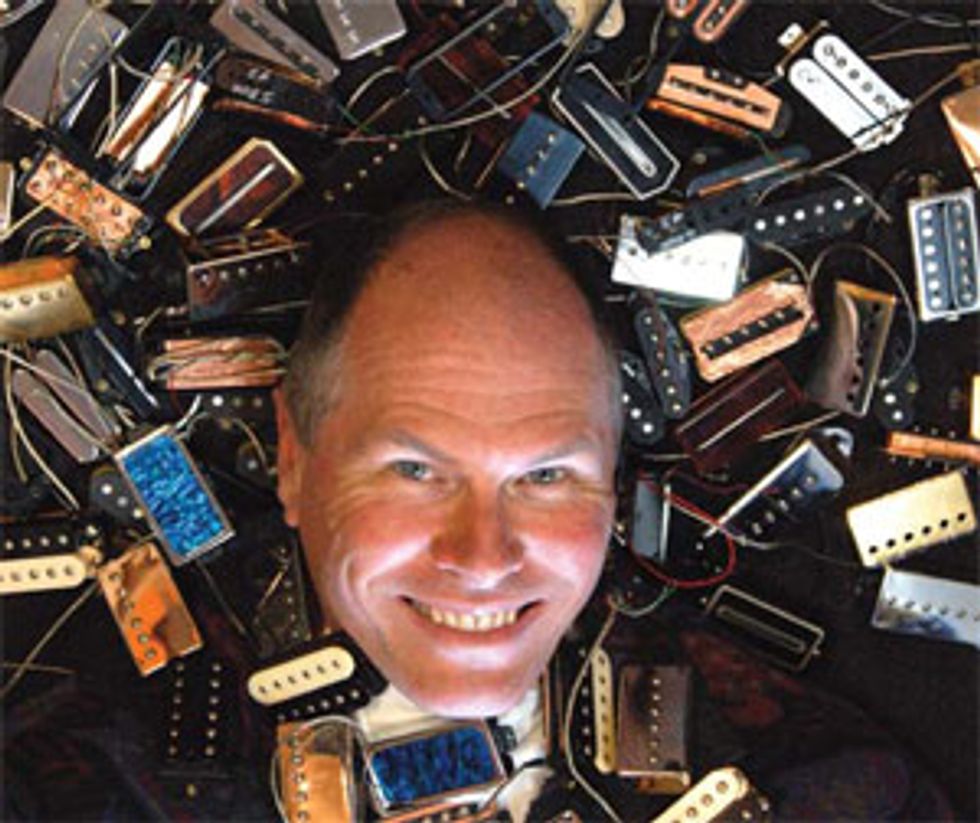
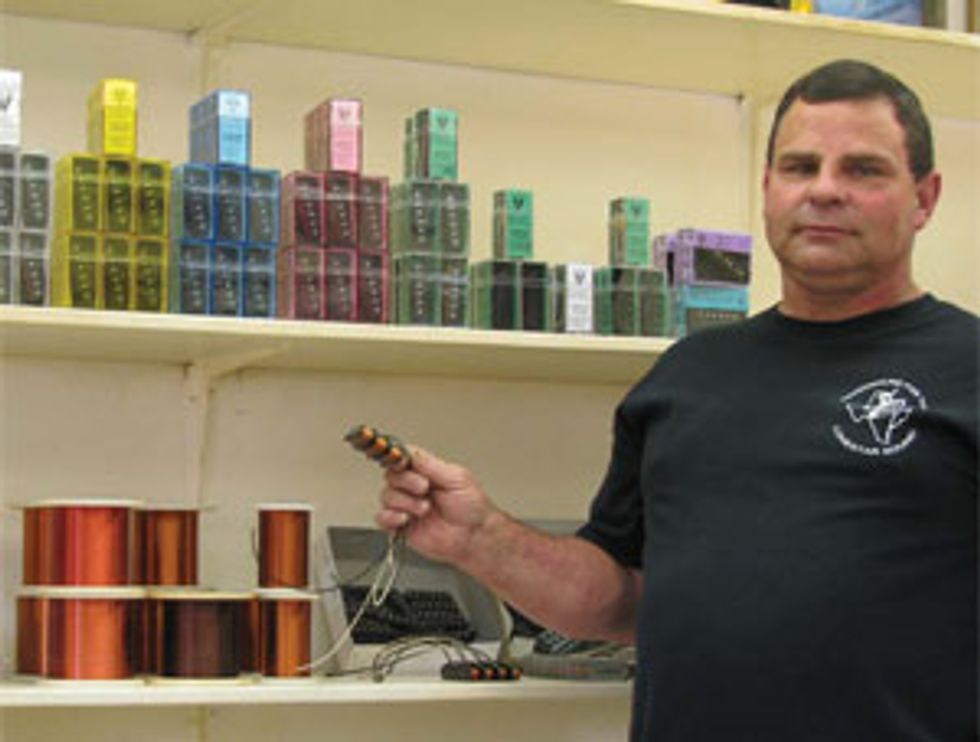
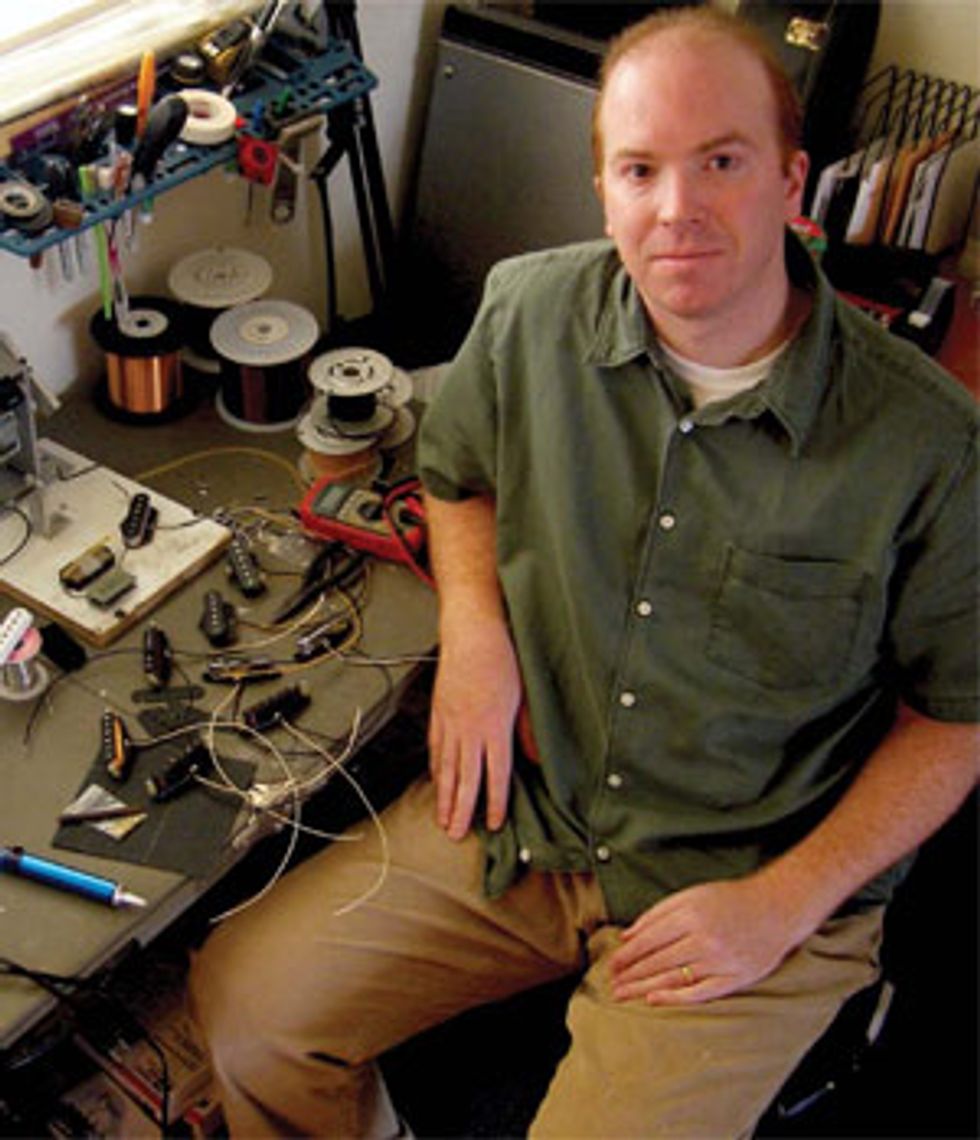
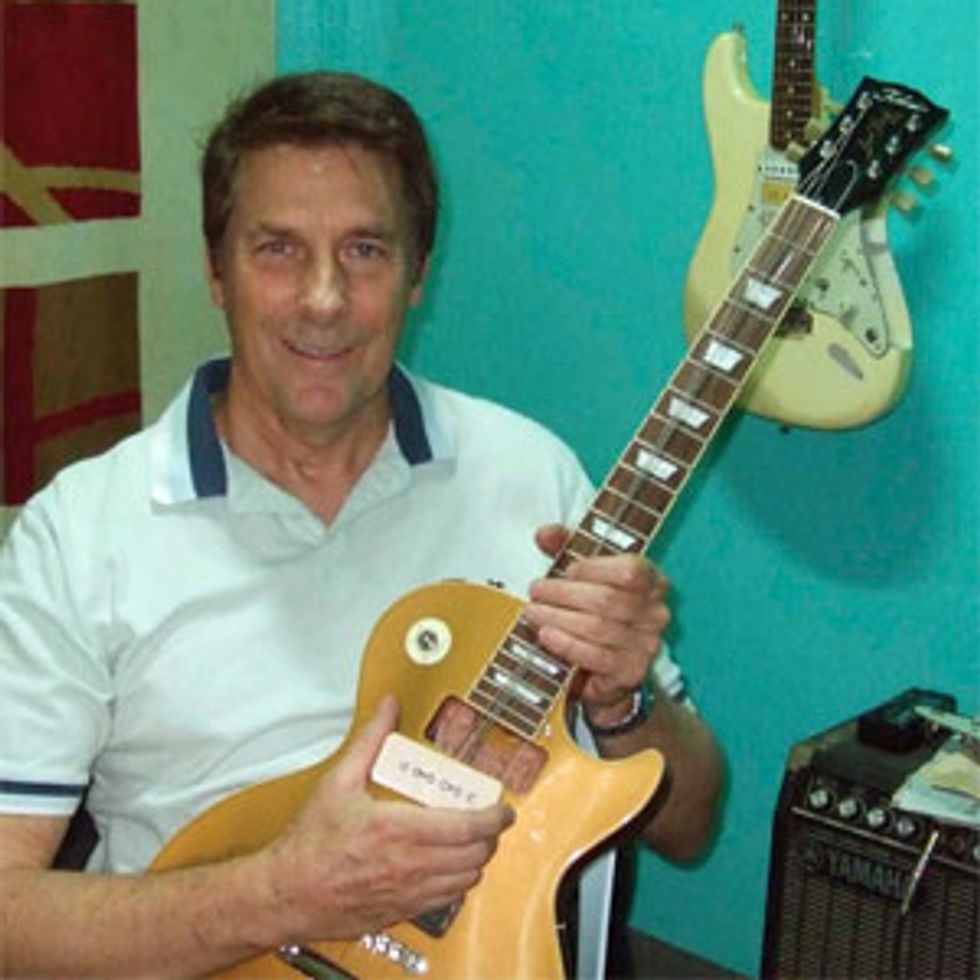
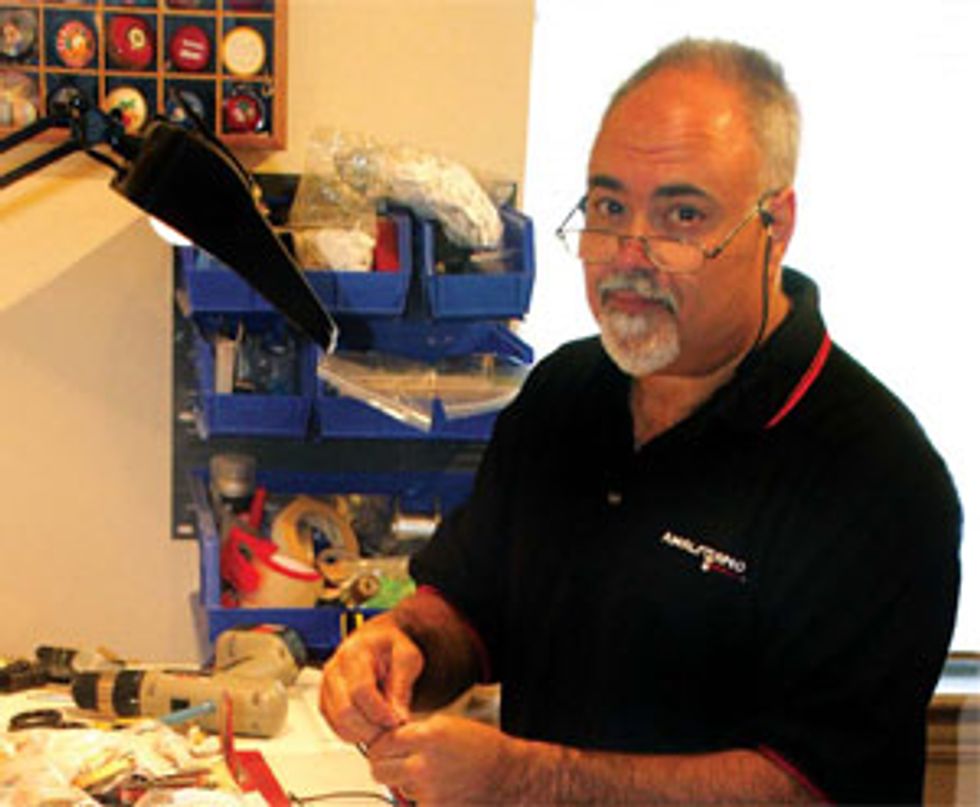










![Rig Rundown: AFI [2025]](https://www.premierguitar.com/media-library/youtube.jpg?id=62064741&width=1245&height=700&quality=70&coordinates=0%2C0%2C0%2C0)

